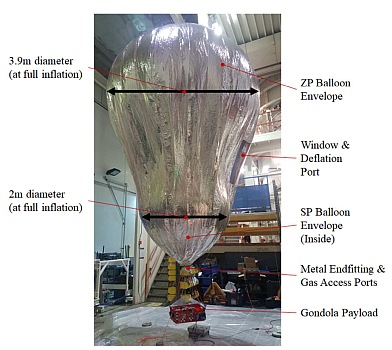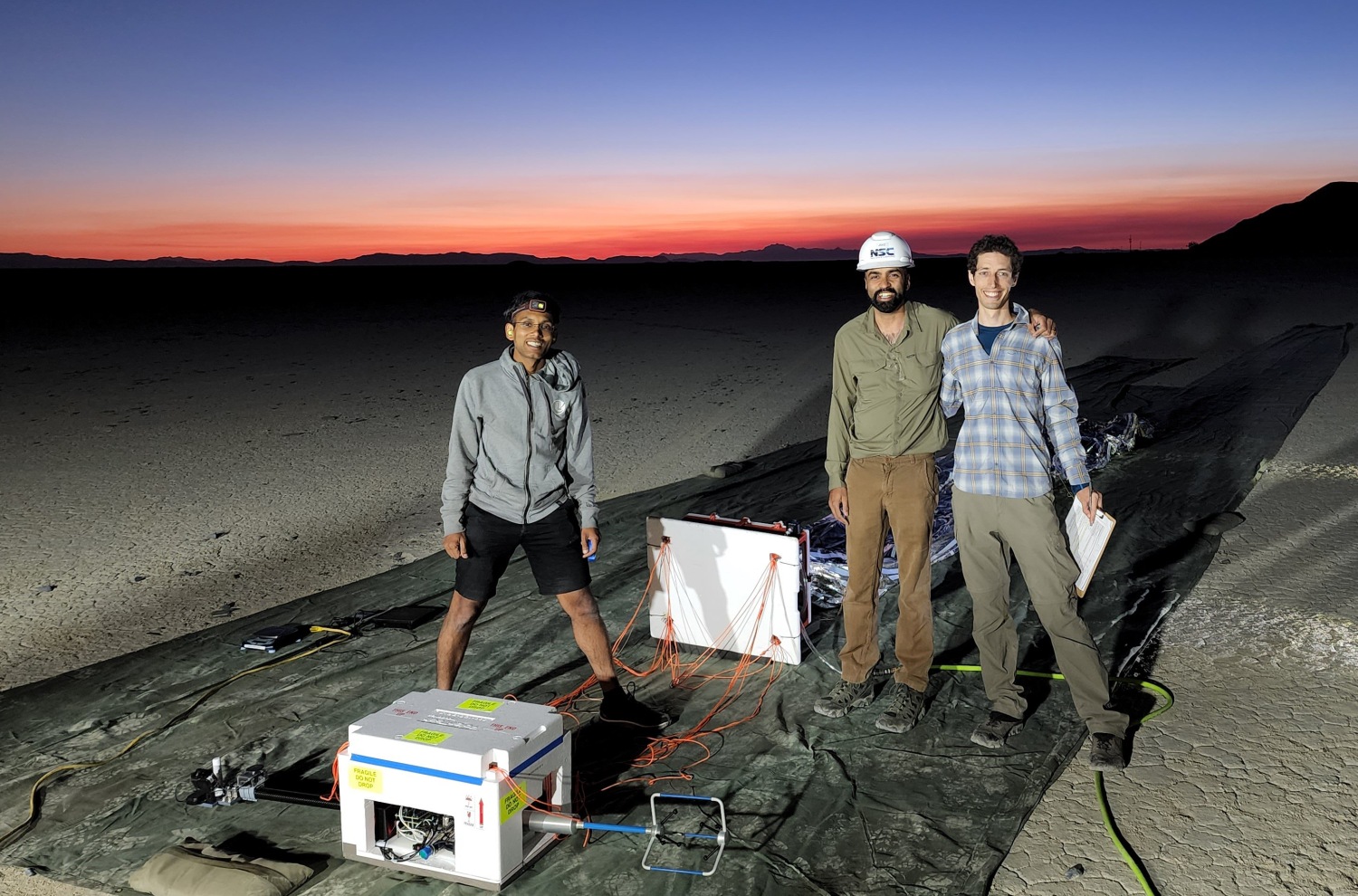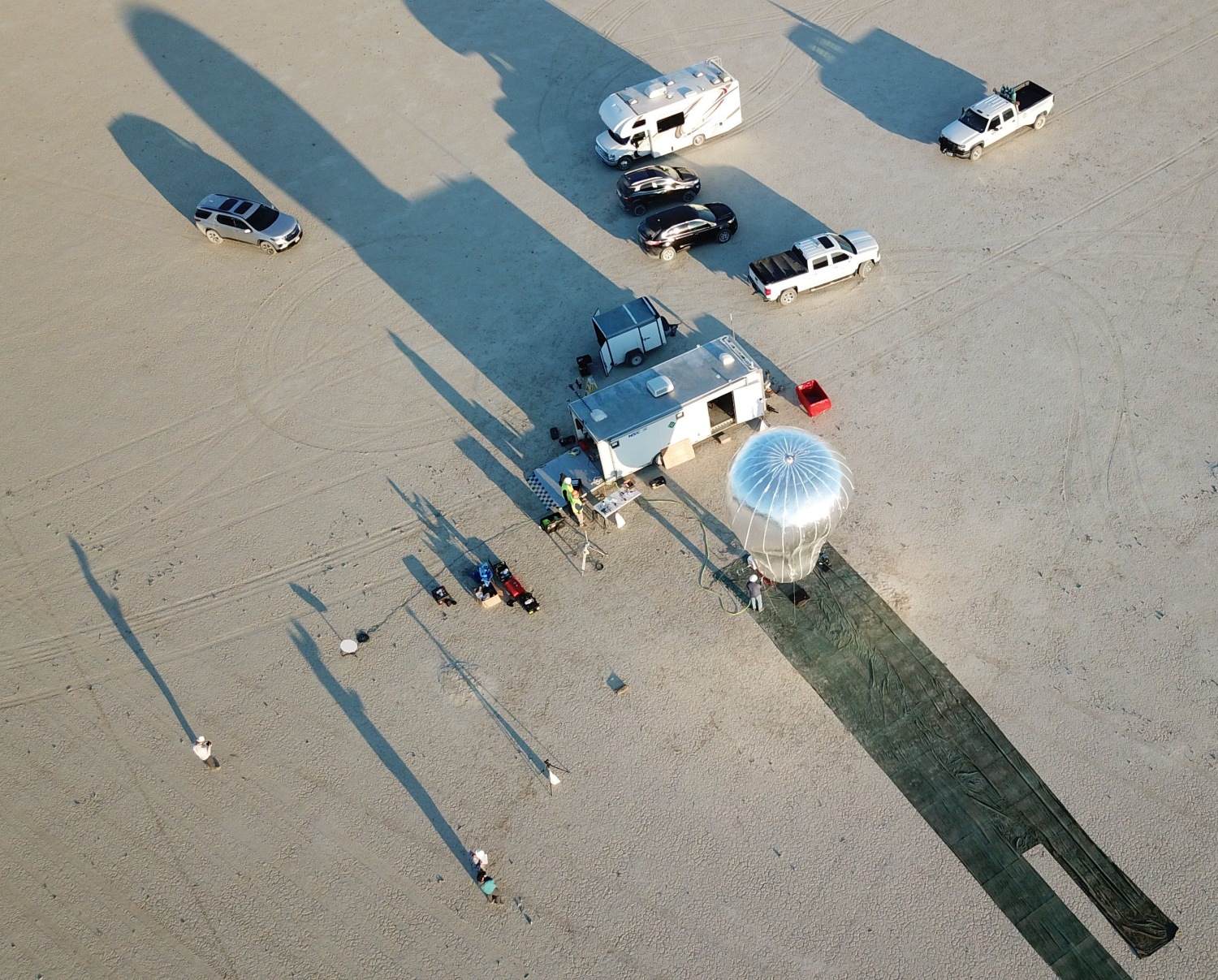Purpose of the flight and payload description
This flight was a test flight of a one-third scaled-down version of a future Venus Aerobot. The craft is being developed by NASA Jet Propulsion Laboratory at the California Institute of Technology and Near Space Corporation from Tillamook, Oregon.
At left we can see an scheme of the balloon and its main parts (click to enlarge). The term Aerobot (contraction of AEROnautical roBOT) refers to a robotic balloon vehicle that autonomously exercises trajectory and/or altitude control. The Venus aerobot has been designed as a "balloon within a balloon": an outer unpressurized balloon (which protects against sulfuric acid aerosols and sunlight), and an inner pressurized balloon that acts as a helium reservoir. To increase altitude, helium vents from the inner reservoir into the outer balloon, which expands to give the aerobot additional buoyancy. When it's time to reduce altitude, helium is pumped back into the reservoir, causing the outer balloon to shrink and decrease the aerobot's buoyancy.
As Venus clouds contain sulfuric acid and other corrosive chemicals, the aerobot's outer balloon is built using an acid-proof metallized Teflon-coated multilayered material. The metallized layer helps to reduce solar heating while a structural Vectran-reinforced inner layer keeps it strong enough to carry the science instruments below. New techniques have also been developed to ensure a long-duration acid-proof seal with minimal helium leakage from the seams that form the balloon.
The ultimate goal of the aerobot would be to travel on the Venusian winds, floating from east to west, circumnavigating the planet for at least 100 days. The aerobot would serve as a platform for a range of science investigations, from monitoring the atmosphere for acoustic waves generated by venusquakes to analyzing the chemical composition of the clouds. The accompanying orbiter would receive data from the aerobot and relay it to Earth while providing a global view of the planet. The aerobot can be directed to raise and lower its altitude to conduct science between about 171,000 and 203,000 feet (52 and 62 kilometers) within Venus' atmosphere.
Details of the balloon flight
Balloon launched on: 7/14/2022
Launch site: Black Rock Desert, Nevada, EE.UU
Balloon launched by: Near Space Corporation (NSC)
Balloon manufacturer/size/composition: Venus Variable Altitude Aerobot
End of flight (L for landing time, W for last contact, otherwise termination time): 7/14/2022
Landing site: In the Black Rock desert, Nevada, US
External references
- Inflation sequence tradeoffs and laboratory demonstration of a prototype variable-altitude venus aerobot Acta Astronautica, Volume 214, January 2024, Pag. 757
- JPL's Venus Aerial Robotic Balloon Prototype Aces Test Flights JPL website
- Venus Variable Altitude Aerobots Research task page at JPL's website
16213If you consider this website interesting or useful, you can help me to keep it up and running with a small donation to cover the operational costs. Just the equivalent of the price of a cup of coffee helps a lot.




